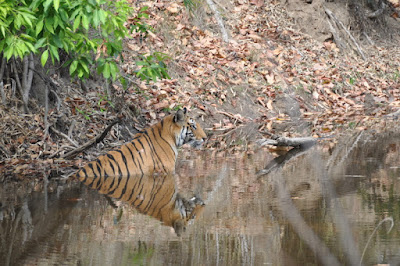I am a big advocate of tourism supporting conservation and as importantly conservation supporting tourism. It’s a mutually beneficial circle. India is making good progress in this regard at least in terms of tourism supporting conservation, which brings me back to my pointers on getting the most out of a Tiger Safari. My advice is to travel in March or early April as it is getting warmer and Tigers look for watering holes to cool down in the morning, often in well-known locations. Take a safari that includes a minimum of six nights visiting more than one National Park in Madhya Pradesh. And choose wildlife specialists that support conservation to arrange your trip for you. The rest is down to luck. But if you’re looking for statistics, by following these pointers each of our safaris have averaged 7-18 different Tiger sightings in recent years and resulted in some fantastic images.
Join us on our Indian Safaris in 2020 Click here for more info and then email mysafari@ontracksafaris.com to be eligible for our special offers.
Join us on our Indian Safaris in 2020 Click here for more info and then email mysafari@ontracksafaris.com to be eligible for our special offers.













